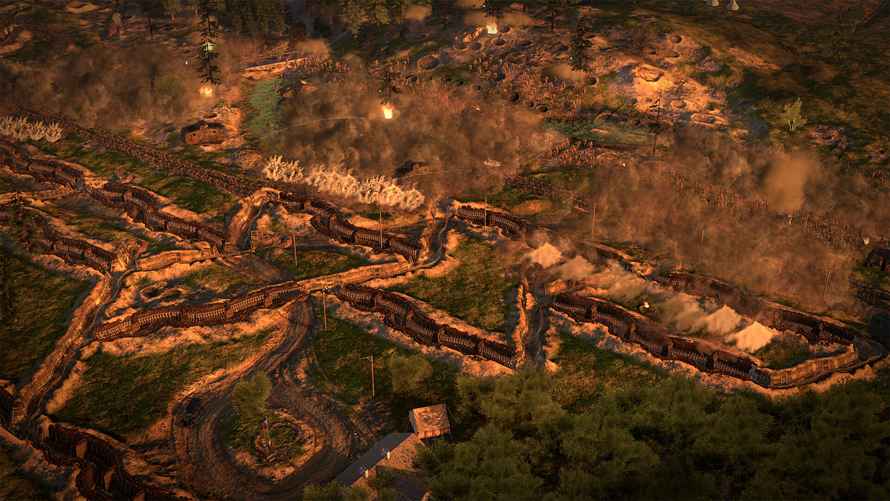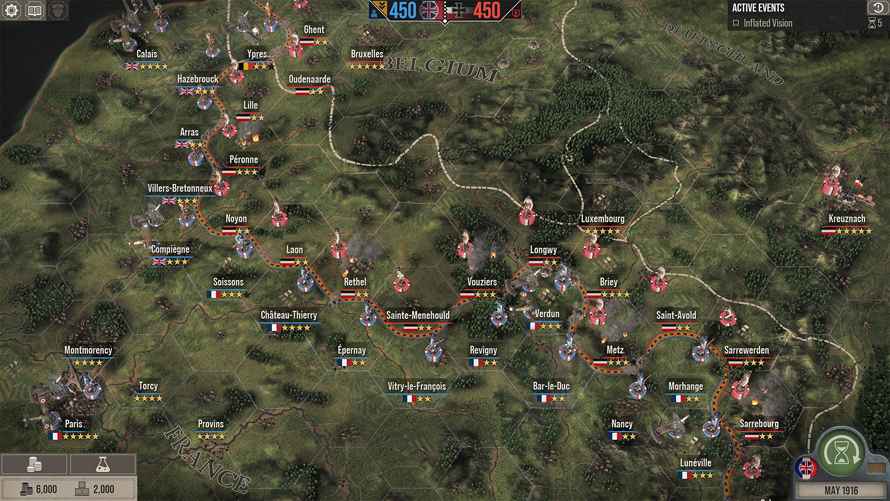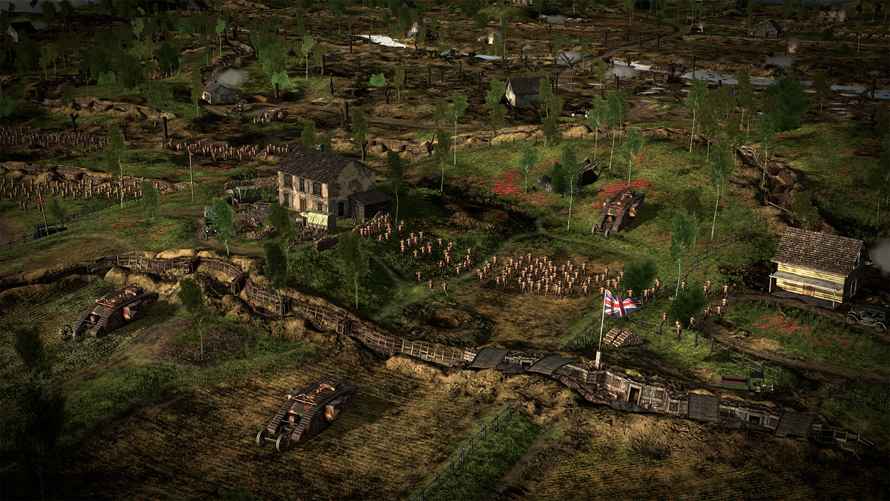The Great War: Western Front Review
The geopolitics that caused it are complicated, and its weapons and tactics were relatively primitive. It was a trench-based, inch-by-inch war of attrition. For these reasons, World War 1 has been underrepresented in games. That’s about to change. Petroglyph’s The Great War: Western Front combines grand strategic and real-time approaches to one of the world’s deadliest conflicts. It certainly helps fill a neglected niche. But, does “the war to end all wars” make a good setting for wargamers to duke it out? Or is it just an existential slog?
Big Picture
Not unlike the Total War games, The Great War has two layers. The strategic map lays out the front, a patchwork of provinces controlled by either the Allies or Central Powers. At this level, you are a Theatre Commander, looking at the big picture. Your challenges as Theatre Commander are many, though your goal always remains the same, to push the front line deeper into enemy territory. Each province has a star rating, with some of the more critical or heavily defended regions having up to five stars. Achieve a “great victory” in battle, and a star is removed. Claim all the stars, and the province is yours.
As Theatre Commander, you’re also balancing research and development, espionage, and deciding where funds should be allocated. How much money you have to spend is based on national morale. Winning battles increases morale and gives you more strategic options. Additionally, events outside your control demand a response. Of course, the enemy is pushing forward and can initiate a battle. There are also scripted, historical events — like America joining the war — that change your morale score for the better or worse.

The Great War: Western Front uses painted illustrations and voice-over narration to give context to the events. This is critical, as the majority of gamers might not be familiar with World War I politics and personalities. Like every game with a grand strategy layer, the big picture can feel bloodless and abstract, so those scripted events and cutscenes add some drama.
In the Trenches
If you’re like me, enjoyment in this genre comes from the real-time battles. In The Great War, they’re definitely the focus. The goals are simple enough: capture a series of control points. In practice, though, there’s a number of moving parts, and they escalate in difficulty and complexity.
Mirroring the real conflict, trenches are the key to battle. Placing them, upgrading them, and filling them with various unit types is the heart of each encounter. Some tranches are purely defensive and difficult for the enemy to destroy. Others offer temporary respite or deadly firing positions. Others are purely to provide cover to advance units or to maintain the line.
Hand in hand with infantry are those units that helped define World War 1’s new and deadly war technologies, like poison gas, aircraft, balloons, and artillery. Using artillery or bombers to soften enemy targets or spy balloons to get a clear battlefield view, upgrading soldiers, and adding new unit types like flamethrowers keeps the options interesting. Battlefields are partly persistent, so return engagements will show the impact of destruction and the presence of trenches and fortifications. Expect to return to the same bit of contested ground multiple times.

Dire Straits
The bloody, operatic clash of Orcs and Skaven in Total War: Warhammer is ridiculous fun. World War 1, on the other hand, was just a grim meatgrinder. The Great War: Western Front tries mightily to humanize the historical events. In the end, though, the hardest-won battle barely moves the needle or changes the front-line geometry. Just like the real thing, the game is a reminder that war is a joyless, futile exercise.
The game’s strategic map is a dense morass of icons. It’s intimidating at first. Although less daunting over time, The Great War is a complex web of systems that will take many hours and battles to master. However, there’s a lot of potential replayability. There are campaigns for both the Allies and Central Powers from both the start of the war and two years in. There’s a single or multiplayer skirmish mode and a map editor.
Apart from the cluttered and visually fatiguing strategic map layer, the real-time battlefields and units look ok, at least zoomed out. There are some engaging moments of destruction, powerful explosions, and some nice seasonal weather effects. Zoomed in, however, the fairly primitive textures and models are a reminder that The Great War is focused on mechanics and not cutting-edge visuals. Entirely successful is the game’s musical score by composer Frank Klepacki. The purely symphonic score echoes the sound a style of early 20th-century composers and traditional game action music as well.

Deep Dive for the Devotee
Doing its best to make a long-ago conflict come alive, The Great War: Western Front is ambitious and complex. Like the actual war, it requires patience, determination, and the ability to suffer repeated failures to make a small amount of progress. It isn’t so much a hardcore sim that novices can’t decipher it. The problem for me is more with the subject matter, combined with the weight of many systems. Victories never feel jubilant. In World War 1, winning was a matter of losing slightly less than the enemy. History lovers and wargamers will find a lot to enjoy, but for me, playing The Great War: Western Front felt a bit too much like homework and not enough like fun.
***PC code provided by the publisher for review***
The Good
- Deep strategy and real time layers
- Engaging historical subject
- Highly replayable
- Excellent music
The Bad
- Very complex
- A lot of battles feel the same
- Needs optimization, some bugs framerate slowdowns
- Interesting but not necessarily fun

